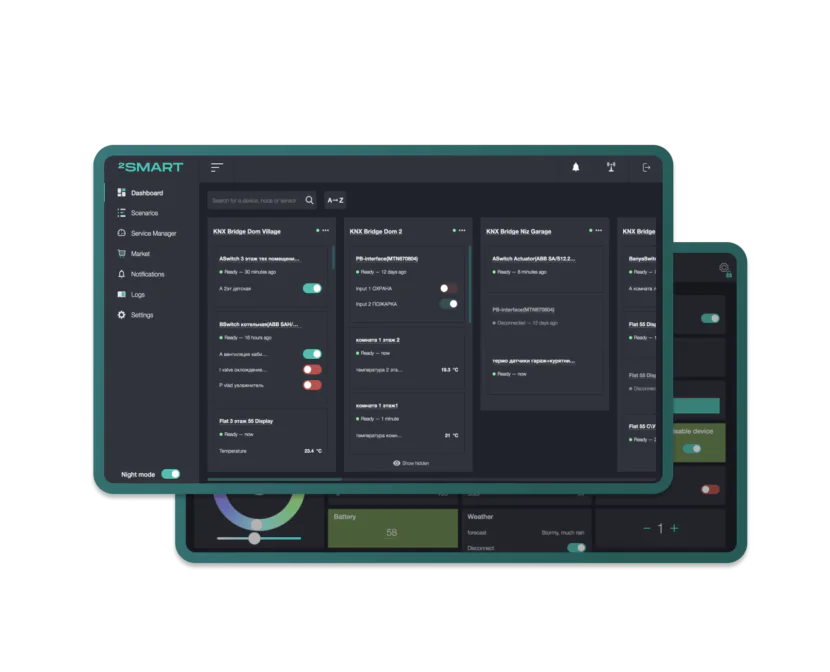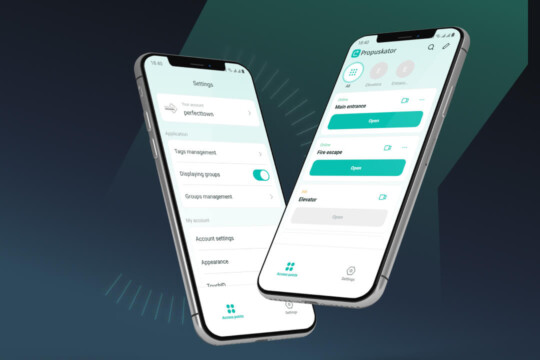Kyiv, Ukraine
Challenge
Nearly every IoT smart building automation solution on the market has issues due to outdated building automation system architecture. As an example, they:
- Do not have event-based home automation system architecture: performance issues with large installations, the user interface is not in real-time.
- Do not work offline
- Support only a few protocols
- Support devices only from a single vendor
Besides this, many IoT building automation systems require technical skills in order to connect a device and set up basic automation. Our task was to create an IoT building automation system that will be flexible in setup for end users.
Solution
We analyzed the operation of alternative IoT automation solutions in the field of IoT in building automation and determined that they mostly necessitate creating complex configuration files in order for a device to function. For our product, we chose to provide a simple interface for connecting and managing IoT building controls.
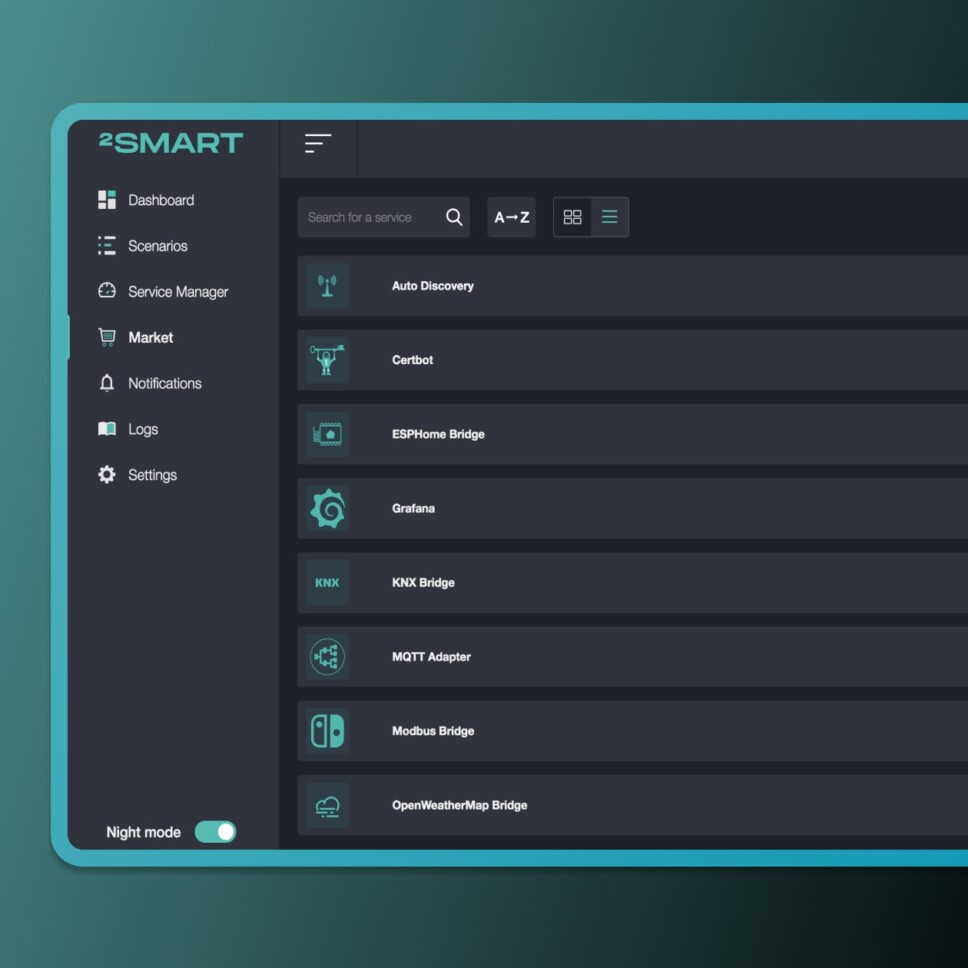
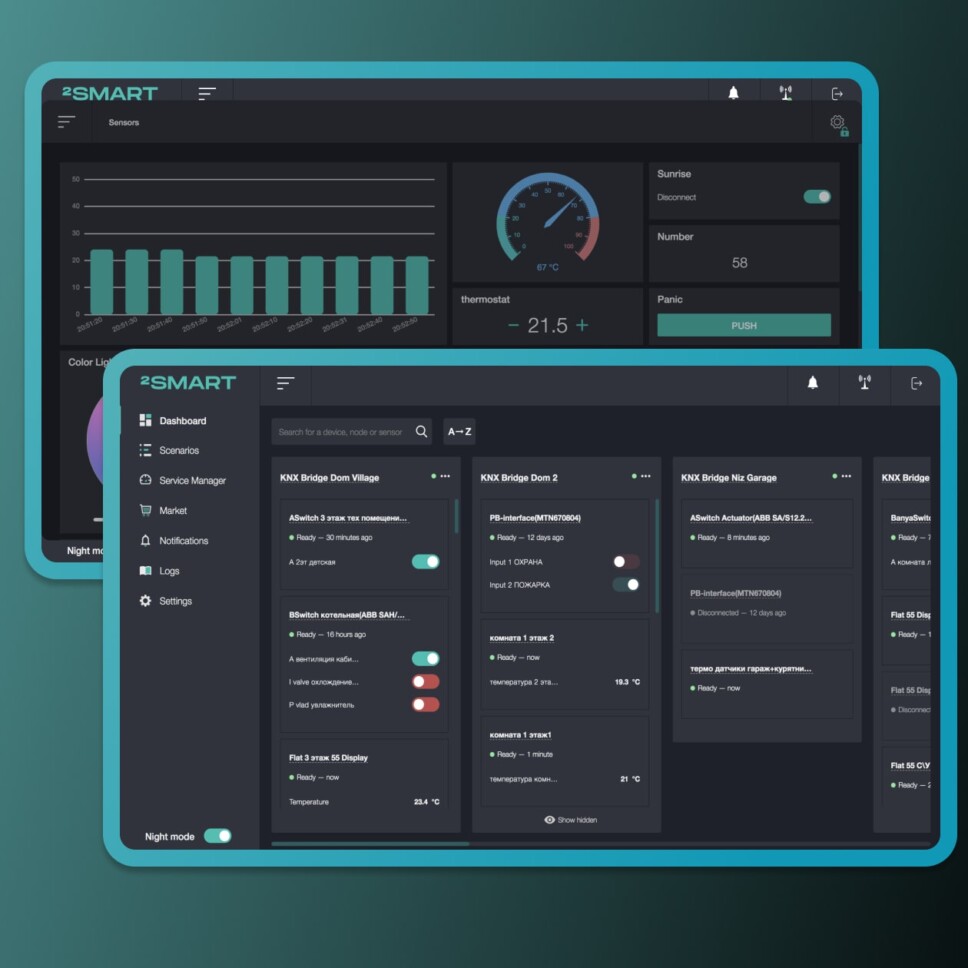
Key features
The delivered 2Smart standalone platform has pluggable architecture of building automation system and consists of a universal core and modules. The core is not tied to any hardware protocols or to any particular vendor. This approach allows us to support devices from any vendor with any protocol. For now, we have the following bridges available: Zigbee, KNX, Modbus, Xiaomi, Custom MQTT bridge, etc.
Having the right building automation architecture was very important for the success of this project. Here are some of the aspects that we have implemented:
- Every feature works offline (true standalone architecture). At the same time, we support remote access through the Internet.
- No backend polling, everything is event-based. Almost everything works instantly with minimal delays in reactions.
- Modular home automation architecture design with the ability to install 3rd-party extensions. We have created a marketplace for extensions; extensions are distributed in docker images.
- The user can install the application on a local machine by running one command.
- Cross-platform support.
- Device auto-discovery support.
Extensive UI is the second most vital component of the platform:
- You can configure dashboards to suit your own needs.
- You can have dashboards for different rooms, floors, and zones.
- Everything on every dashboard is in real time.
- Large library of widgets: you can add as many widgets to the dashboard as you like.
- Each dashboard can have mobile and desktop layouts.
- Parental control can be installed on the screen and locked with a PIN code to restrict the screen from children and/or guests.
The main idea is the flexibility of managing IoT and building automation and developing solutions for that. To achieve this, we have developed scenarios. For more advanced users, we provide the opportunity to program custom scenarios using JavaScript.
For users who don’t want to write code, it is possible to create simple scenarios using a fairly simple and highly flexible interface.
Professionals who want to integrate new types of devices can create their own bridge. For them, we have SDK, which simplifies the development process.
Besides, Grafana can be used to monitor data. Users can also configure Telegram and Slack messages from any device or script.
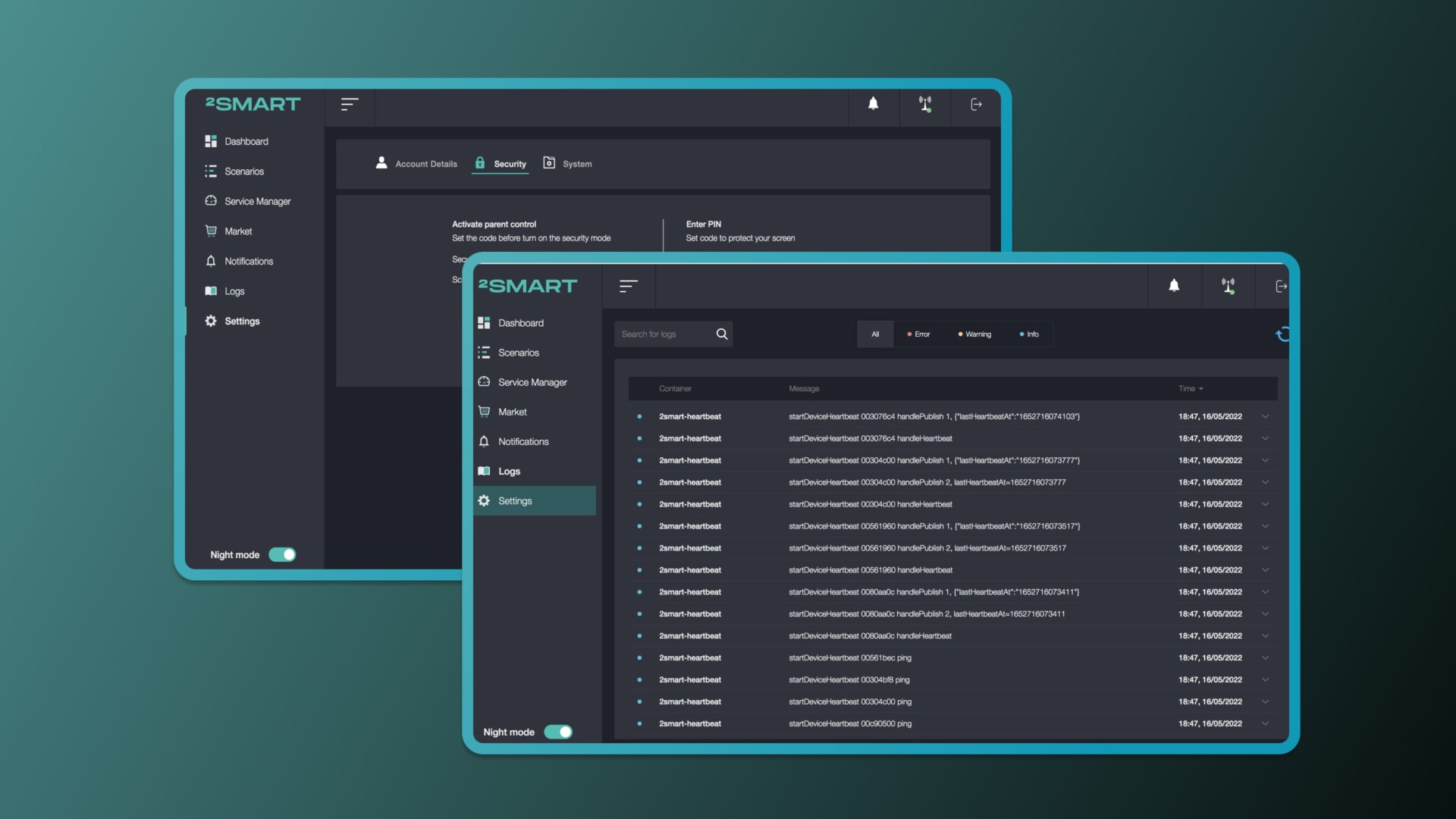
Results
We have developed an IoT automated solutions platform for iot building automation, which supports devices from multiple manufacturers (Zigbee, KNX, Modbus, and Xiaomi).
The delivered 2smart standalone solution is easy-to-use for end users and has extensive UI.

